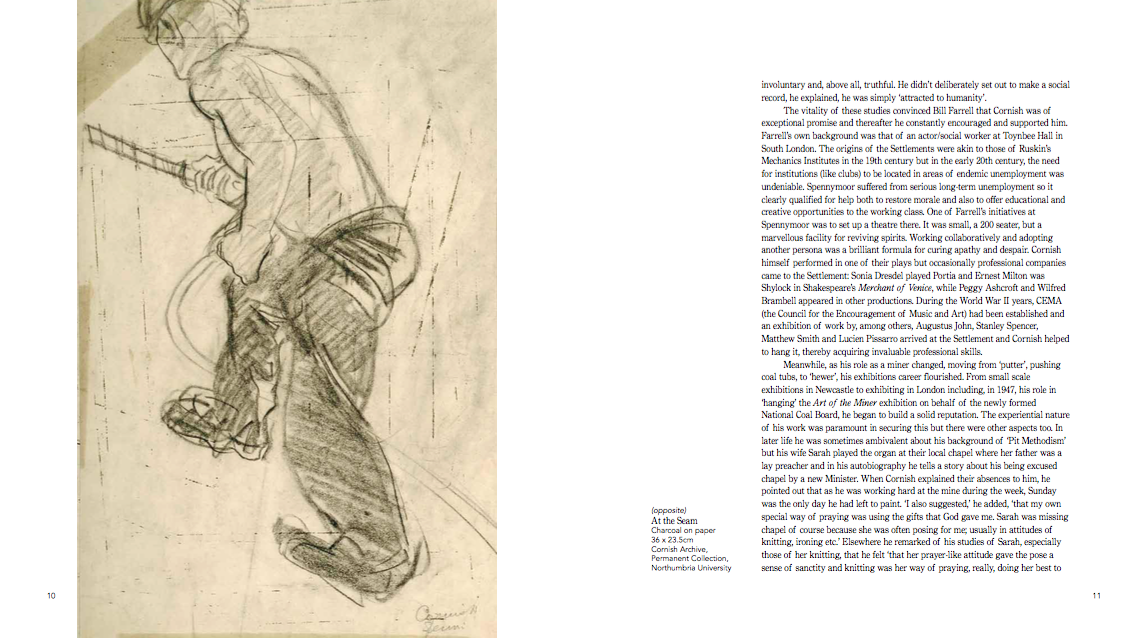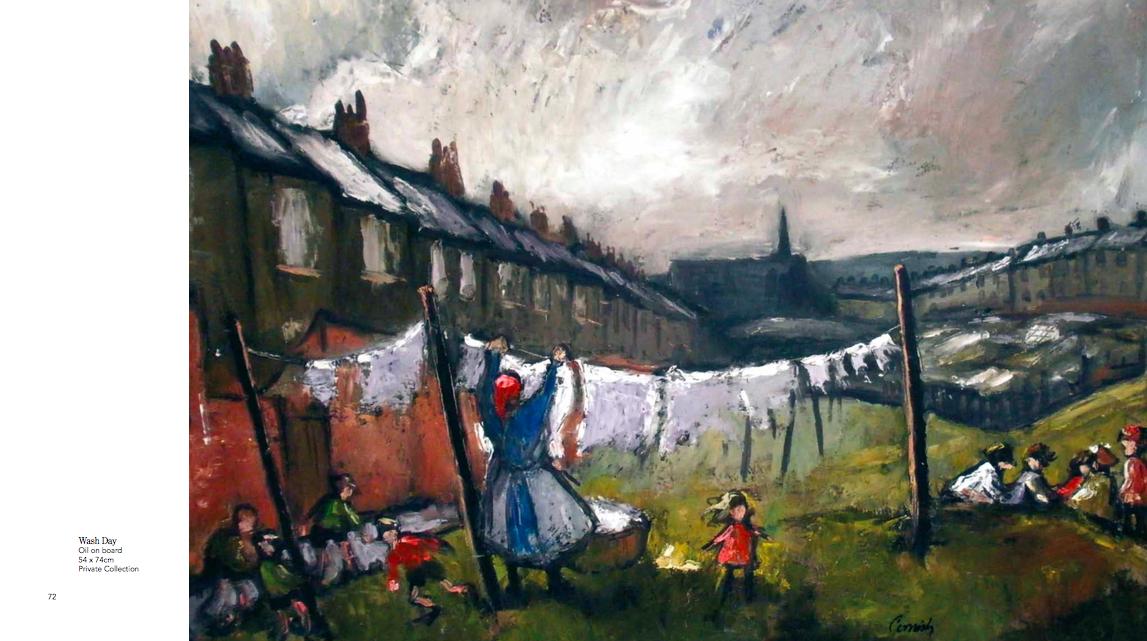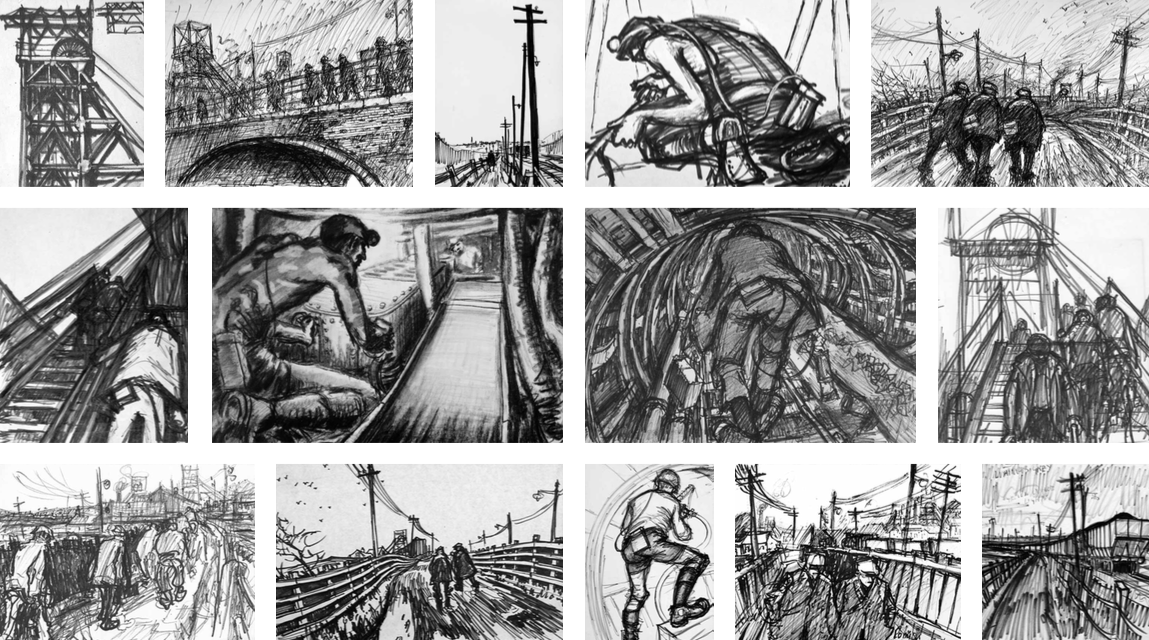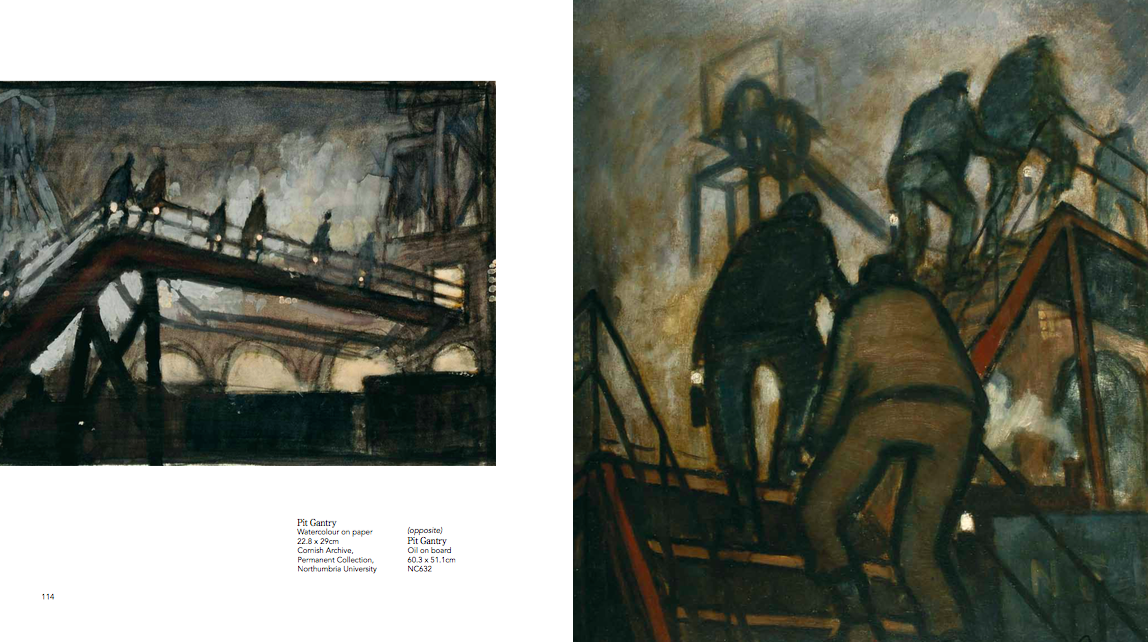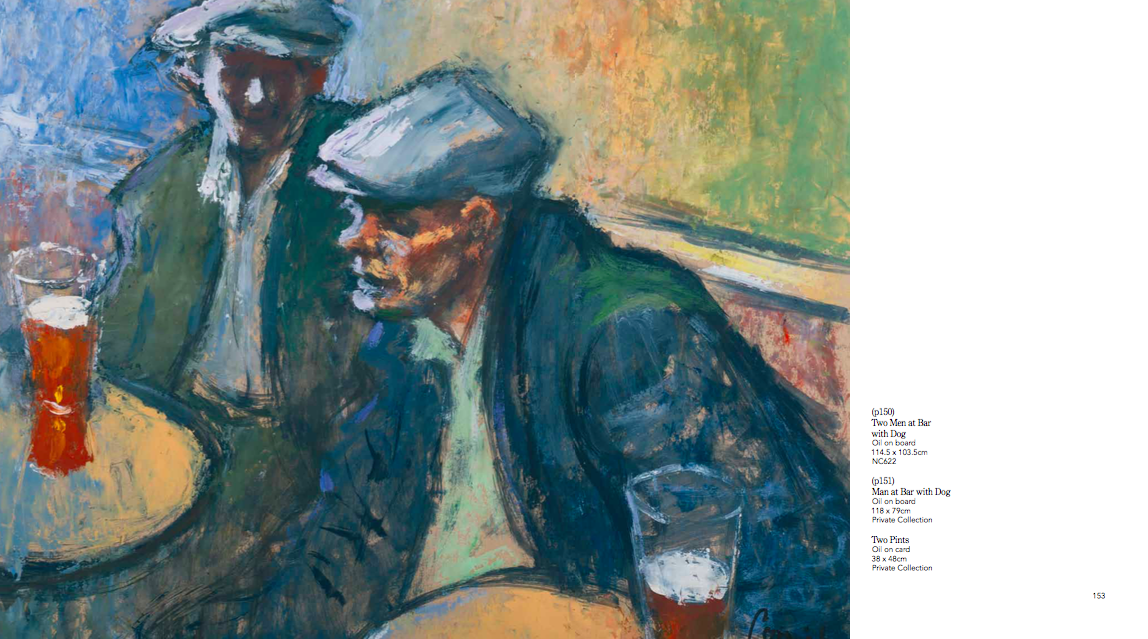The Lost World of NORMAN CORNISH
The story of Norman Cornish's (1919 - 2014) prodigious career as an artist who converted his experience as a miner into compelling imagery has become justly famous. As the mining industry recedes into history though the real context of his life and art grow ever more elusive. Here are a few reminders. At the time of his birth in 1919 the average death rate in British pits was an annual 1.3 per thousand miners. By the time he started work at the age of 14 technological advances had reduced that figure to 0.75 per thousand but that is to ignore the many accidents. Indeed the Spennymoor pit at which he started his working life, the Dean and Chapter Colliery, was notorious enough locally to be known as ‘The Butcher’s Shop’.
Describing in his autobiography his descent to the coal-face on his first day at work, Cornish recalled that, “The cage dropped very rapidly. About half way down I felt that I was coming upover.” At the shaft bottom he realised that he had been “dropped into a man-made world” and “was to learn that the dangers of gas, stone falls, the darkness and the restricted space, were all to shape these men into industrial gladiators.”
For the next 33 years, in a career spent largely underground, Cornish recorded the life of the pit where his ‘marras’ risked their lives every day. He depicted them in the claustrophobic space of the seams or tending pit ponies but of course, his “narrow world” as the novelist Sid Chaplin admiringly called it included that network of customs and shared experiences that bind a community together. In his scenes of their ‘civilian’ life, miners are shown walking to work in the early dawn, the pit head gantry resembling another Calvary. These unselfconscious metaphors might equally apply to his studies of his wife Sarah knitting which the ambivalently secular Cornish allowed to have “an aura of sanctity”. As for his repertoire of pub interiors, they are, of course, bathed in an amber glow, the colour of brown ale, while the local chip van also looms large as a communal meeting point – for gossip as much as for food.
With the demise of the coal industry and the decline of the culture dependent on it, a few pits have been converted into mining heritage centres. They do their job of documentation competently enough but they cannot compare with the heightened, felt experience that Cornish offers. Above all, he presents us with what the American photographer Robert Frank called “the humanity of the moment”.
Illustrated with over 250 images, grouped thematically (Cornish rarely dated his work), The Lost World of Norman Cornish is an extraordinary and captivating pictorial narrative of the artist’s life and work spanning 70 years. Included are his earliest sketches of his grandmother, mother, sister and wife; his iconic ‘Pit Road with Telegraph Poles’; ‘Gantry Steps’; ‘Busy Bar’ and Chip Cart paintings, as well as his street scenes with children playing and women gossiping. Reflecting on his ever changing world Cornish wrote “This special world of mine is constantly changing and many of the people who inhabited it are no longer with us. Many of the places that once helped to make up that world have also passed into time…… However, in my memory and I hope in my drawings they live on. I close my eyes and they all spring to life.”
William Varley’s accompanying essay offers a fascinating insight into Cornish’s life and his absolute commitment to recording the “narrow world” that he knew. He examines Cornish’s development, encompassing his beginnings at the Spennymoor Settlement, determined self-education and gradual emergence as a national figure. Literary parallels of the working-class loner are invoked, from Zola and DH Lawrence, while Van Gogh’s seminal experience in the mines of the Borinage, is also brought into focus.
Paperback, 289 x 260mm
192 pages, 180 full colour illustrations
Editor Mara-Helen Wood
Essay by William Varley
ISBN 978-0-947940-41-6
RRP £26.00
